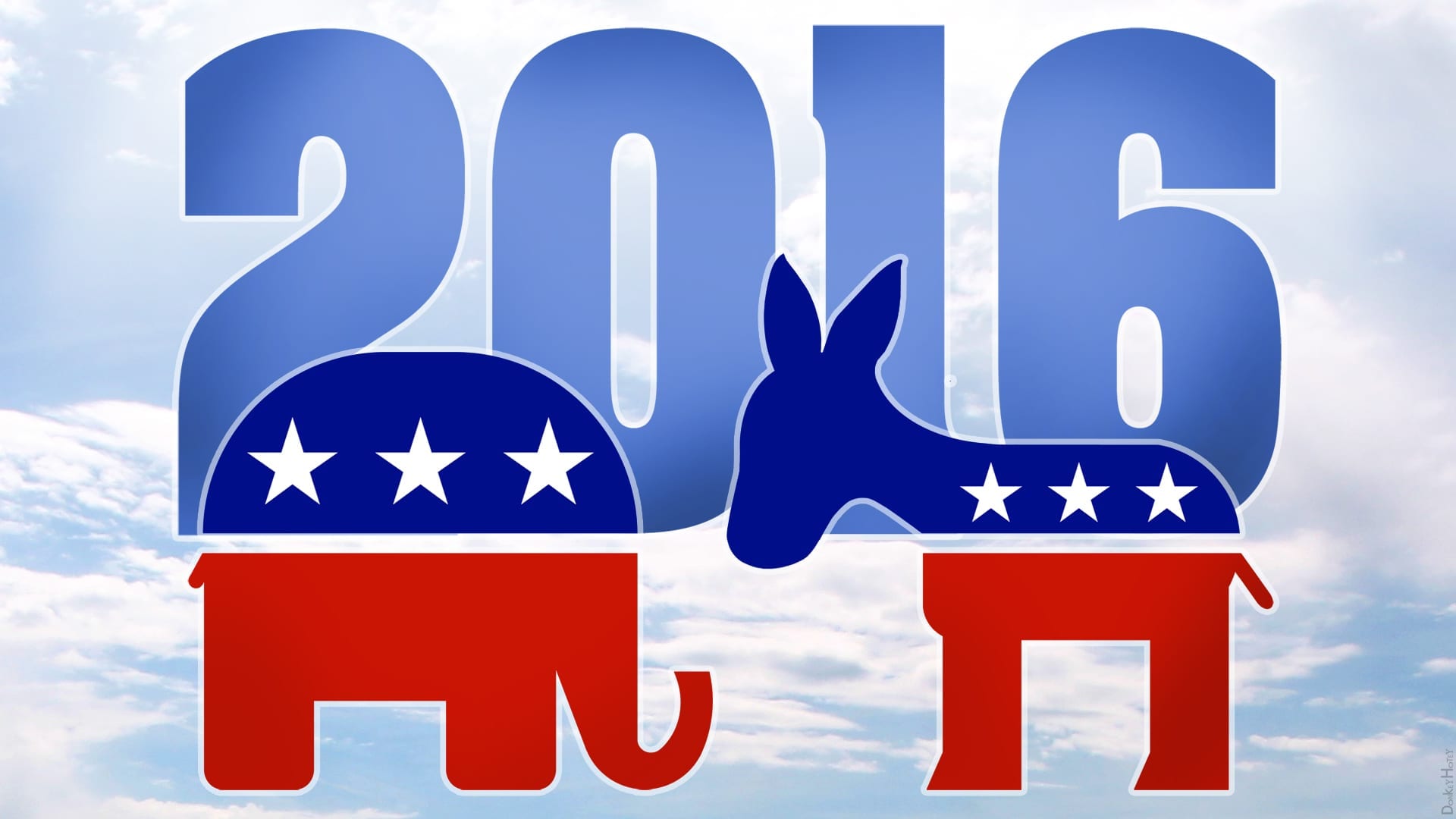Clinton vs. Trump: Gun Control and the Second Amendment
In the third part of a five-part series analyzing each Presidential candidate’s policies, Samantha Lindsay dissects Hillary Rodham Clinton and Donald J. Trump’s stance on gun control and the Second Amendment.

https://www.flickr.com/photos/donkeyhotey/24101702220/in/photolist-CHMwo1-JJBqbo-JfqXJj-HtipDo-EmeBfD-q2LvvN-4EjNgb-hmzdu9-pFhzks-q4cpTN-rfqjvv-qb6LLi-q4cTcY-hFgVz7-hFhnAV-HPBQTn-fw4bh2-qXV8Bc-H9ycLj-j4Mzc2-qTskgB-DGFjYr-jc1Ah1-DdGiqr-E7VzQR-qFKZcy-pvL18H-aK7mXD-E7VA8z-CKwfkh-rMrUHE-rBeoWw-dhh6C5-rPZNZd-s7s6xE-dfrMXk-DuGv5d-DajVcb-fw4bfZ-GfbhE9-q3yPGu-oykALh-HV12FW-qb5h4H-CKwgN7-EfaRhe-jP8E6c-nWr2DW-DUbqVj-rQ8WnK
Written by Samantha Lindsay
The following report is the third in a five-part series presenting a comparative analysis of select legislative proposals presented by the two major candidates in the 2016 presidential election; Democrat (D) Hillary Rodham Clinton and Republican (R), Donald J. Trump. The second article in this series offers a brief introduction to the candidates’ platforms on the issue of the American economy. In this report, I will address the candidates’ positions on the issue of gun control, and the major objections to their proposals. This series is not an endorsement of either candidate.
According to Christopher Ingraham of the Washington Post, there were 355 mass shootings in the United States during the year 2015. For reference, a mass shooting is described as “four or more people, including the gunman, were killed or injured by gunfire.” Gun Violence Archive (A national database of police and news reports) has documented approximately 311 mass shootings in the United States as of Oct. 25 of this year.
Information recently released by the Federal Bureau of Investigation indicates that violent crime, including murder, rape, robbery and aggravated assault is on the rise; particularly in our major cities. A breakdown of the FBI’s violent crime statistics reveals that, “In 2015, an estimated 1,197,704 violent crimes occurred nationwide, an increase of 3.9 percent from the 2014 estimate… firearms were used in 71.5 percent of the nation’s murders, 40.8 percent of robberies, and 24.2 percent of aggravated assaults.”
Extensive media coverage of recent riots and violent crimes, as well as information sharing campaigns on social media, has made these statistics broadly available to the general public creating a heightened level of public awareness. The threat to domestic security that these statistics represent has led to increased public anxiety, which is manifest in a recent Gallup Poll, which concluded that “Americans’ level of concern about crime and violence is at its highest point in 15 years.”
The Bureau of Alcohol, Tobacco, Firearms and Explosives reports that the manufacturing and sale of firearms have nearly doubled over the past five years as public concern has prompted a sharp spike in the gun market due to more Americans purchasing guns for self-defense. According to Gun Violence Archives, there have been 1,461 cases of self-defense involving the use of a gun this year.
Nevertheless, support for regulatory reform has also risen and according to a survey conducted by PewResearchCenter, “… large majorities of both Democrats (90%) and Republicans (75%) have favored making private gun sales and sales at gun shows subject to background checks.” Similarly, a majority of voters from both parties support barring gun sales to people with mental illness and people on “no-fly” or terror watch lists.
In response to public concerns about violent crime, both Clinton and Trump have presented similar proposals that reflect general bipartisan support among the electorate. Both candidates recommend a federal background check intended to close the gun show and internet sales loopholes, thereby making it more difficult for people with criminal intent to purchase weapons and ammunition. While Clinton specifically mentions barring domestic abusers from purchasing guns and Trump focuses on violent gang members and drug dealers, the platforms of both candidates include stronger enforcement of existing law prohibiting people who suffer severe mental illness and those convicted of a violent crime from purchasing firearms. Nevertheless, there are clear distinctions in their platforms that raise strong objections from their individual opponents.
(D) Hillary Rodham Clinton
Clinton’s platform includes a proposal to repeal the “Protection of Lawful Commerce in Arms Act (PLCAA).” According to the Law Center to Prevent Gun Violence, the PLCAA is “… a federal statute which provides broad immunity to gun manufacturers and dealers in federal and state court.” A repeal of this law would make it easier for victims of violent crime to file negligence charges against the manufacturers of firearms under tort law and receive compensation for their injury or loss.
Objections
When cases are brought to court against manufacturers of any product under tort law, the plaintiff is required to demonstrate that the maker of the product had a legal obligation, that they failed to meet that legal obligation and the plaintiff suffered injury or loss as a direct result.
For example, auto companies have legal obligations to meet safety standards, which include quality brakes. If a company sells a car with defective brakes, and the buyer is injured in an accident because their brakes were defective, the auto company can be held liable for the injury. However, if an auto company meets all legal obligations in the manufacturing and sale of a vehicle, but the buyer then uses the car in the commission of a crime, the auto company cannot be held liable.
PLCAA specifically defines the limitations of tort law regarding gun manufacturers. As with tort law covering other industries, it does not provide immunity if a manufacturer sells a defective weapon, or if they violate sales regulations. It is legal for gun manufacturers to make and sell certain types of firearms within specified limitations to qualifying individuals in the United States. Under PLCAA, as long as gun manufacturers meet all legal obligations, they cannot be held liable for the actions of the buyer.
The primary objection to Clinton’s proposal is that a repeal of PLCAA would potentially lead to a multitude of tort litigation that would ultimately make the manufacturing of firearms too expensive to maintain, thereby perhaps leading to a de facto ban on the sale of firearms in the United States. It is argued that this would be an indirect violation of the Second Amendment of the Bill of Rights, which (according to this Gallup Poll) 73% of the public believes guarantees American citizens the right to own guns.
(R) Donald J. Trump
Trump’s platform includes a proposal to enact a “national right to carry” law that would permit anyone with a concealed or open carry license to legally carry a firearm in all 50 states. The rationale for this proposal is that the vast majority of licensed gun owners are armed for the purpose of self-defense and the “right of self-defense” does not have natural borders. Therefore, it is argued, the right to carry for self-defense should not have legal borders within the United States.
Objections
Unless a federal “right to carry” permit required everyone seeking a permit to receive high-quality standardized training in all 50 states before being issued a license, the level of training required would vary from state to state, which might put the public at risk of an increase in accidental shootings.
The Brady Campaign to Prevent Gun Violence argues that “Allowing untrained, or under-trained, persons to carry loaded, hidden handguns in public puts people at risk of being killed or injured, intentionally and unintentionally.” In addition, the campaign argues that “It also makes it harder for law enforcement to identify the real perpetrators during a shooting… Almost every major law enforcement organization…thinks law enforcement should have discretion over the carrying of concealed handguns in public.”
The needs of law enforcement vary from town to town, city to city, and state to state. While “right to carry” permits may be acceptable, perhaps even preferable, in small cities and rural areas of our country, there may be an unacceptable risk involved in allowing such permits in densely populated cities; particularly in areas with an already existing high crime rate.
Edited by Ben Webb
Featured image by DonkeyHotey on Flickr, obtained using creativecommons.org



